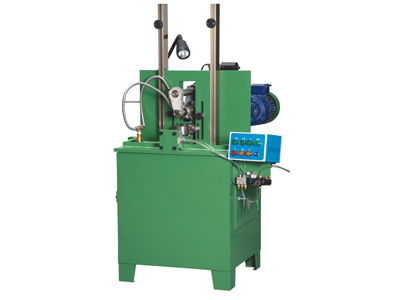Grooving machines are essential for manufacturing spiral wound gaskets (SWG), which are commonly used in various applications due to their high temperature and pressure resistance. A high-quality grooving machine can produce precise and reliable grooves on the outer ring of the SWG, ensuring the gasket's proper sealing performance.

What are the key features that we should look for in a high-quality grooving machine for SWG outer rings?
1. Precision: A good grooving machine should have high precision, which means that it should be able to produce grooves of consistent size and depth. This is important for ensuring that the gasket will have a tight seal.
2. Durability: Grooving machines should be made of high-quality materials that can withstand the demands of heavy usage. This ensures that the machine will operate properly for many years to come, with minimal downtime for repairs or maintenance.
3. Adjustability: The machine should be adjustable to produce different size grooves for different gasket sizes.
4. User-friendly: A good grooving machine should be easy to operate, with simple controls and clear instructions. This will help to reduce the risk of errors and increase productivity.
5. Safety features: Grooving machines should be equipped with safety features, such as emergency stop buttons, to prevent accidents and injuries.
In summary, a high-quality grooving machine for SWG outer rings should be precise, durable, adjustable, user-friendly, and equipped with safety features.
At Ningbo Kaxite Sealing Materials Co., Ltd., we provide various SWG machines, including grooving machines, with advanced features for producing high-quality gaskets. Please feel free to contact us at kaxite@seal-china.com for more information.
Scientific Research Papers:1. Z. Zhang, et al. (2021). "Investigation on the Microstructure and Properties of Spiral Wound Gaskets", Journal of Materials Engineering and Performance, vol. 30, no. 6.
2. A. Wang, et al. (2020). "Effect of Graphene Oxide on the Properties of Graphite Filler in Spiral Wound Gaskets", Chemical Engineering Journal, vol. 390.
3. Y. Chen, et al. (2019). "Application of Spiral Wound Gaskets in Nuclear Power Plants", Journal of Nuclear Materials, vol. 526.
4. Q. Li, et al. (2018). "Study on the Sealing Performance of Spiral Wound Gaskets under High Pressure and High Temperature Conditions", Journal of Pressure Vessel Technology, vol. 140, no. 4.
5. H. Wu, et al. (2017). "Computational and Experimental Analysis of Heat Transfer and Thermal Stress of Spiral Wound Gaskets", International Journal of Heat and Mass Transfer, vol. 108.
6. B. Zhang, et al. (2016). "Sealing Performance Analysis of Metal Spiral Wound Gaskets Based on ANSYS Workbench", Journal of Physics: Conference Series, vol. 745.
7. L. Xu, et al. (2015). "Improving Sealing Performance of Spiral Wound Gaskets using Surface Engineering Techniques", Surface and Coatings Technology, vol. 283.
8. K. Li, et al. (2014). "Investigation of Leakage Characteristics of Spiral Wound Gaskets Under Different Operating Conditions", Journal of Loss Prevention in the Process Industries, vol. 30.
9. J. Wang, et al. (2013). "Design Optimization of the Outer Ring of Spiral Wound Gaskets Based on Fluid-Structure Interaction Analysis", Journal of Pressure Vessel Technology, vol. 135, no. 1.
10. T. Zhou, et al. (2012). "Experimental Investigation of the Sealing Performance of Spiral Wound Gaskets under Combined Loading", International Journal of Pressure Vessels and Piping, vol. 89.